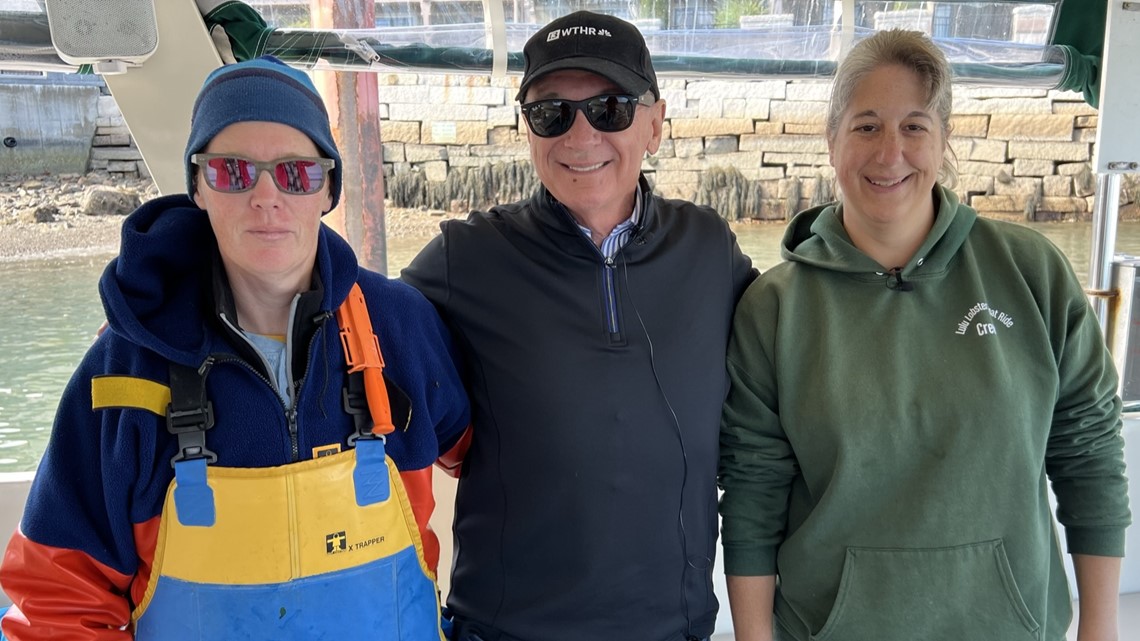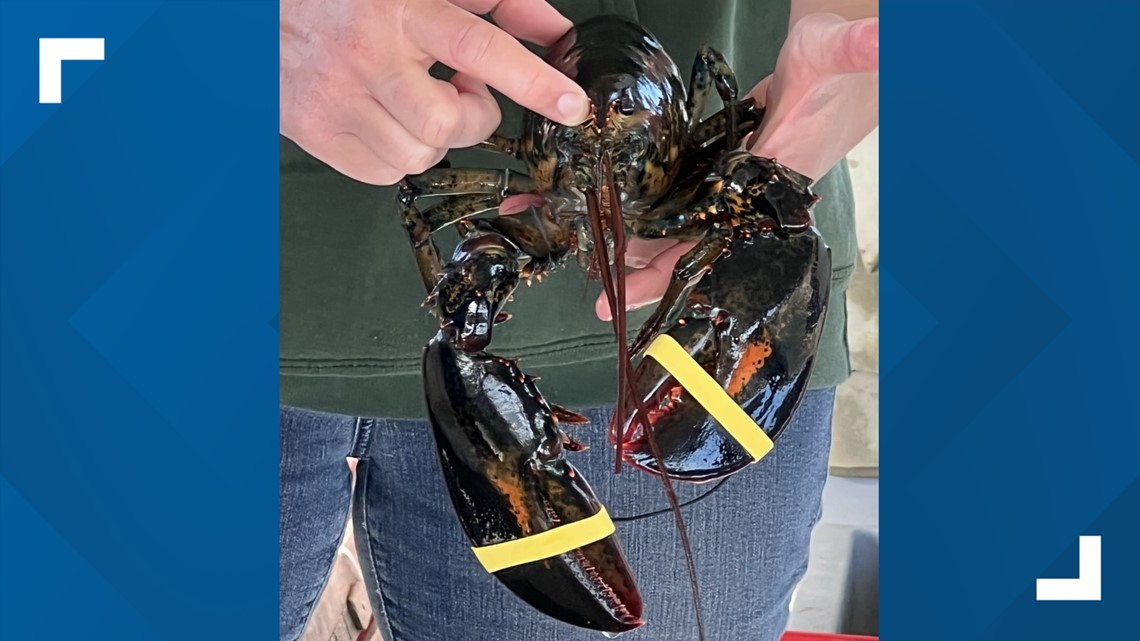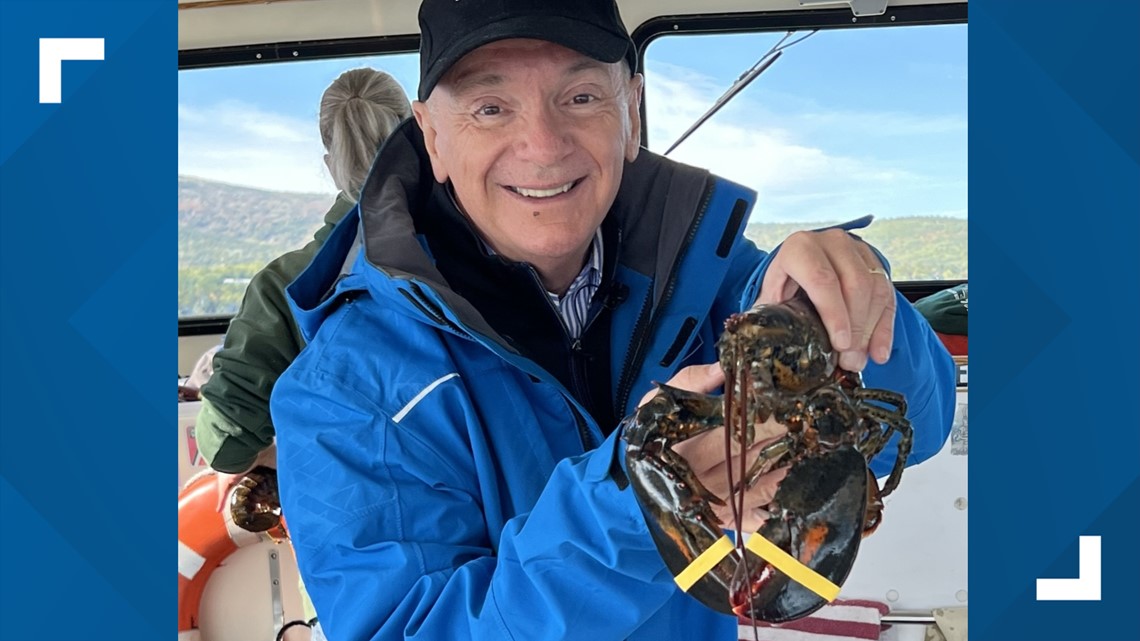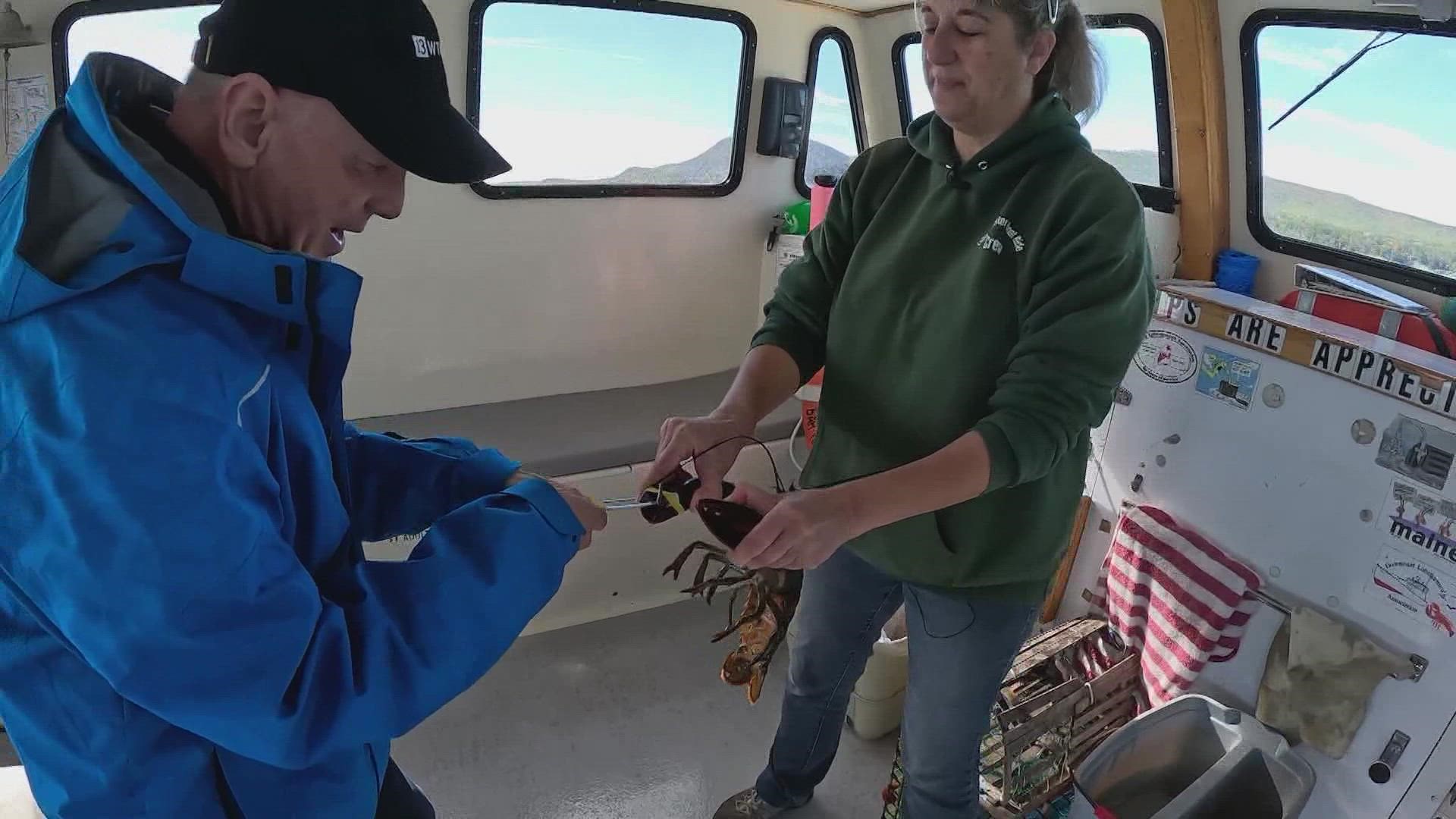MAINE, USA — Chuck's Big Adventure is traveling to New England. It is an area known for its beauty, history and, in autumn, it's explosion of color. It is also home to a seafood delicacy: lobster.
LuLu Lobster Boat
Maine is, in many ways, a mystery.
It's coastline, with long meandering inlets and secretive hidden bays, is actually — believe it or not — 13 miles longer than the coast of California. It's also a place with an identity indelibly tied to the Atlantic Ocean, in particular when it comes to lobster.
The American lobster is found off the coast from Labrador to Maine, but the breed is so unique to waters off the state that it's referred to here and around the world as Maine lobster. Restaurants, grocery stores and food service companies specifically order lobster from this part of the country because of its size and unique taste.


Captain Amanda Bracy grew up in a family of lobster fishermen. Along with tour guide Jen Heindel, Captain Amanda takes visitors to Maine off the Bar Harbor coast via the boat named LuLu and on an adventure into the world of lobster fishing. It's an inside look at the industry, the legacy and the economy of lobstering.
Each operator can only have 800 lobster cages, and even though they are nocturnal feeders, these fishing operators cannot fish by hand or at night, to give the lobsters a fighting chance.


As the boat peels into the bay, dozens — possibly hundreds — of buoys can be seen. Lobster fishing is a cultural part of the Maine landscape. Its economic impact is huge, but it is hard work for the fishermen.
"The bait and fuel are your two biggest expenses on the boat right now. Because the cost of bait has been so high and the cost of fuel is so high, especially on a bad day where the lobsters aren't going to move around too much, some of these guys may stay in port all day," Heindel said. "The other thing is the price of the lobster fishermen getting has been going up and down throughout the course of the summer. At one point, it bottomed out at $0.75 a pound. A man and his cousin went out lobster fishing and came back with 800 pounds worth of lobsters, and by the time he got done paying that day's expenses, he was left with about $2."


We did venture out though into a windy sea where we dropped a cage and brought up the day's catch. As you might imagine, there is a size restriction on what you can keep, so many lobsters have to be thrown back — and sometimes, crabs enter the cage, making for a different kind of seafood buffet.
As I pulled one of the lobsters out of the cage, Heindel gave me some advice to keep my hands safe when handling them.
"They have spikes on the underside of their abdomen, and they also have spikes on the outside. So if the lobster starts flapping its abdomen, it's going to poke the side of your hand," Heindel said. "Some of the coolest things about them that I can tell you guys is lobsters regrow body parts that are missing. If you got into a fight with another lobster and the lobster loses a claw, it grows back."


So with that lobster anatomy lesson, Captain Amanda slowed down the vessel and told me that the fish in the winter feed from 800 to 1,200 feet down, making lobstering a real challenge.
For her, it's just part of the job. Captain Amanda's family and many others have been fishing these waters since the 1600s, and they want to keep that alive by introducing a new generation of people into the heritage of lobster fishing.
I can honestly say that after being on a boat, seeing them caught and handling a few, I will never look at lobsters the same way again.
By the way, pass the butter, please!

